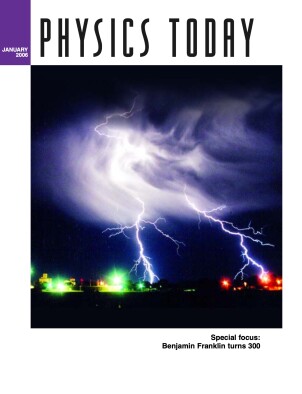Mineral Physicists win Balzan Prize
DOI: 10.1063/1.2180184
Two Carnegie Institution researchers who have spent decades analyzing the behavior and properties of minerals exposed to extreme conditions, especially high pressure, have been jointly awarded the Balzan Prize in mineral physics by the International Balzan Foundation. Four prizes awarded annually recognize achievements in science, art, the humanities, and social sciences. Since 1961, 106 scientists, institutions, and others have received the Balzan Prize, including Mother Teresa, Jean Piaget, and the Nobel Foundation.
Russell J. Hemley, a senior staff scientist at the institution’s geophysical laboratory in Washington, DC, and director of the US Carnegie/Department of Energy Alliance Center (CDAC), and Ho-kwang Mao, a senior staff scientist at the institution’s geophysical lab, won the award “for the impressive impact of their joint work leading to fundamental breakthroughs, theoretical and experimental, in the field of minerals submitted to extreme physical conditions,” according to the foundation’s citation.
The foundation said the two “have operated as a highly effective team, characterized by twenty years of research contributions at the highest level. They have developed techniques which allow them to study the behaviour of a wide range of materials, such as hydrogen, the most abundant ‘mineral’ in the universe. Their results have deep implications for our understanding of nature.”
Although the scientist’s work has focused largely on researching the properties of materials at high temperatures, they also examine materials at pressures of up to 2.5 megabars. (See Physics Today, August 1998, page 26
Hemley, who began his research in molecular spectroscopy and electronic structure theory, early on became interested in the effects of pressure in such studies; at Carnegie he began to apply and extend new chemical physics techniques in high-pressure diamond anvil cell experiments, according to the institution’s website. Since then, his research has expanded to include high-pressure experimental and theoretical studies in fundamental chemistry and physics, Earth and planetary science, and materials science.
Some of Hemley’s recent accomplishments include the discovery of new phenomena in hydrogen at megabar pressures; the observations of new transformations in molecular materials and novel high-pressure molecular compounds; the creation of new materials under pressure, including superconductors, magnetic structures, and superhard materials; and the novel behavior of glasses and amorphous solids under pressure. Hemley continues to develop new high-pressure techniques, including optical methods, synchrotron radiation for diffraction and spectroscopy, and transport measurements.
In 1976, Mao and his colleagues were the first to create a static pressure of 1 megabar—a million times the ambient pressure at sea level and double what had previously been achieved in a laboratory. Since then, they have progressively improved the multi-megabar technique and coupled it with analytical methods, including synchrotron x-ray diffraction, infrared, Raman, Brillouin, fluorescence, and Mössbauer spectroscopies, according to the institution.
Since 1985, in collaboration with Hemley, Mao has further improved both the technique of creating such pressures and the methods of analyzing what happens to substances exposed to them, the foundation says.
Hemley and Mao have observed and described such extreme-pressure phenomena as the occurrence of new types of molecular bonds; the creation of new, extremely hard materials, superconductors, and magnetic structures; and pressure-induced crystallization and amorphization, the foundation says.
Hemley and Mao received their prize of $1 million Swiss francs (about US$800 000) during a November ceremony in Bern, Switzerland.

Hemley


Mao

